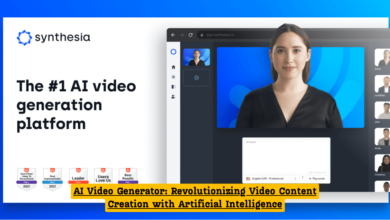Google Unveils New ‘Open’ AI Models with Enhanced Safety Features
In a groundbreaking move, Google has announced the release of its new ‘Open’ AI models, featuring a strong emphasis on enhanced safety measures. This latest development in AI technology underscores Google’s commitment to addressing safety concerns while advancing the capabilities of artificial intelligence. Here’s an in-depth look at what makes these new models stand out.

The Significance of Google’s New AI Models
Google’s new ‘Open’ AI models represent a significant advancement in AI technology, particularly in terms of safety and usability. Here’s why these models are noteworthy:
1. Enhanced Safety Features
The new models are designed with enhanced safety features to address various concerns related to AI usage. These features include improved content filtering, advanced bias mitigation techniques, and robust mechanisms to prevent misuse. By incorporating these safety measures, Google aims to set a new standard for responsible AI development.
2. Open Access for Greater Transparency
Google’s decision to make these models ‘open’ highlights its commitment to transparency and collaboration. By providing broader access to these models, Google is encouraging researchers, developers, and organizations to scrutinize and contribute to their improvement, fostering a more open and accountable AI ecosystem.
3. Improved Performance and Usability
Beyond safety, the new models offer enhanced performance and usability. They are designed to deliver more accurate and contextually relevant responses, making them valuable tools for a wide range of applications, from customer support to creative content generation.
Key Features of the New ‘Open’ AI Models
Google’s new AI models come with several notable features that enhance their functionality and safety:
1. Advanced Content Filtering
To ensure safe and ethical use, the new models include advanced content filtering capabilities. These filters are designed to identify and block harmful or inappropriate content, reducing the risk of misuse and ensuring that interactions with the AI remain respectful and appropriate.
2. Bias Mitigation Techniques
Addressing biases in AI systems is crucial for fair and equitable outcomes. Google’s new models incorporate sophisticated bias mitigation techniques to minimize the impact of biases in training data and model outputs. This helps in promoting fairness and reducing the risk of perpetuating stereotypes or discriminatory practices.
3. Robust Misuse Prevention
The new models feature robust mechanisms to prevent misuse. These mechanisms include controls to limit the generation of harmful or misleading information and safeguards to ensure that the models are used ethically and responsibly.
Implications for the AI Industry
Google’s unveiling of these new AI models with enhanced safety features has several implications for the AI industry:
1. Setting a New Standard for Safety
By prioritizing safety in its AI models, Google is setting a new standard for the industry. Other tech companies and AI developers are likely to follow suit, adopting similar safety measures and contributing to the overall advancement of responsible AI practices.
2. Encouraging Collaboration and Innovation
The open access model encourages collaboration and innovation within the AI community. Researchers and developers can now contribute to refining and improving the models, leading to more effective and innovative solutions for various applications.
3. Addressing Public Concerns
Enhanced safety features are crucial for addressing public concerns about AI technology. By implementing these measures, Google aims to build trust and confidence in AI systems, demonstrating a commitment to addressing ethical and safety issues.
How to Get Started with Google’s New AI Models
For those interested in exploring Google’s new ‘Open’ AI models, here’s how to get started:
1. Accessing the Models
Google provides access to these models through its AI platform. Interested parties can sign up for access and explore the models’ capabilities through Google’s developer tools and resources.
2. Utilizing the Safety Features
Users should familiarize themselves with the safety features integrated into the models. Understanding how to effectively use content filters, bias mitigation techniques, and misuse prevention mechanisms will help in maximizing the benefits of these models while ensuring ethical use.
3. Contributing to the Development
Researchers and developers are encouraged to contribute to the development of the models. Providing feedback, reporting issues, and suggesting improvements can help in refining the models and advancing their capabilities.





